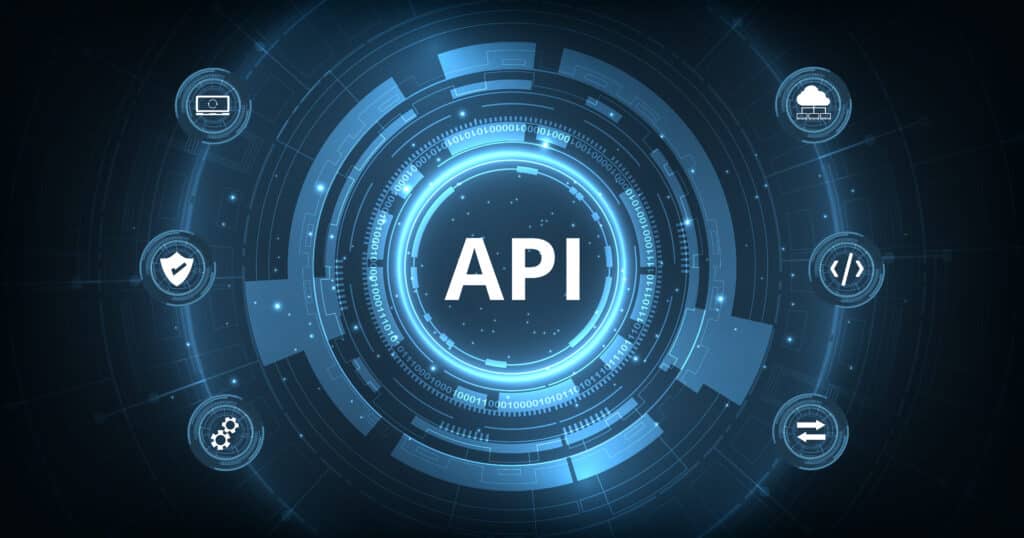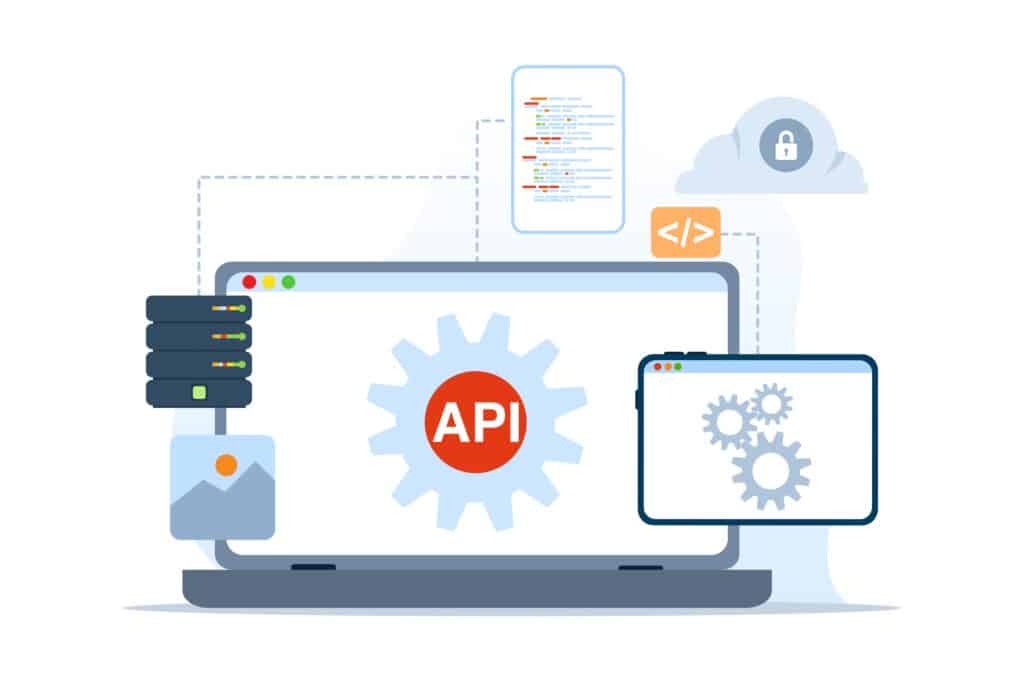APIs allow different systems to connect and share data effortlessly. However, with convenience comes risk. Hackers can take advantage of poorly secured APIs to access sensitive information or disrupt business operations. The key issue: API attacks are increasing, and businesses often neglect this threat until damage has already occurred. This guide will explain how to safeguard API integration using managed services. Keep reading for practical tips that could prevent significant problems down the line!

Common API Security Risks
Hackers often take advantage of weak APIs like a thief finding an open window. Inadequate security exposes your data to unauthorized access and misuse.
Unauthorized access opens the door to numerous security vulnerabilities. It occurs when unapproved users gain entry to systems or data, often causing disruption and loss. Weak API authentication methods, such as simple keys or outdated protocols, increase this risk.
Cybercriminals take advantage of these weaknesses to steal sensitive customer information or interfere with business operations.
Strong authorization techniques can prevent these breaches before they occur. Enforcing strict identity verification policies and multi-factor authentication adds strong protection layers.
Limiting access based on roles also lowers exposure by denying unnecessary permissions for critical operations.
Data breaches
Hackers aim at APIs to access sensitive information. Insufficient authentication or inadequate API security opens a path for data theft. Cybercriminals take advantage of these weaknesses, leading to financial losses for businesses and harm to their reputations.
APIs frequently handle personal or financial data during integrations. If encryption is absent, attackers can intercept and exploit this information during its transmission. Consistent evaluations and effective monitoring help minimize risks by identifying irregularities promptly.
Safeguarding your API is now a critical aspect of running a business.

API abuse and misuse
Cybercriminals often exploit APIs by bombarding them with excessive requests, an issue referred to as rate-limiting abuse. This strains systems and interrupts services, leaving businesses exposed to downtime or data breaches.
Malicious actors may also take advantage of endpoints to access sensitive information or carry out unauthorized actions.
Inadequately secured APIs can serve as entry points for fraud, account takeovers, or even ransomware attacks. Improperly configured permissions amplify these risks by allowing excessive access.
Addressing such weaknesses enhances security measures and lessens compliance challenges.
Strong protections require thoughtful planning and ongoing upkeep beyond basic authentication methods.

Best Practices for Securing API Integrations
Managing API security isn’t just a technical task; it’s a critical safeguard for your business. Small lapses can lead to bigger headaches, so it’s worth doing right from the start.
Use API gateways for centralized management
API gateways create a single control point for managing all API integrations. They handle request routing, authentication, and rate limiting. By acting as an entry point to your services, API gateways protect back-end systems from unauthorized access or excessive traffic.
These tools also simplify secure data transmission by enforcing encryption protocols like HTTPS.
Centralized management allows businesses to monitor and audit API activity efficiently. For example, logging every request helps identify security vulnerabilities faster than manual checks.
As the saying goes:.
“You can’t manage what you don’t measure.”
With automated logs and insights, businesses gain clearer visibility into their APIs’ performance while strengthening cybersecurity measures effectively.
Implement robust authentication mechanisms
Strong authentication methods safeguard data and prevent unauthorized access. Apply OAuth security best practices to validate users securely. For example, implement token-based authentication rather than depending solely on static API keys.
Tokens expire after a set time, minimizing extended risks.
Two-factor authentication (2FA) provides an additional layer of protection. Require users to confirm their identity using something they know and something they possess—like a password and a mobile-generated code.
This measure greatly reduces the chances of compromised accounts caused by stolen credentials.

Encrypt sensitive data during transmission
Protecting data while it travels is crucial. Hackers often exploit unsecured transmissions to intercept sensitive information like API keys, access tokens, or personal user data. Encrypt all transmitted data using protocols such as HTTPS and TLS (Transport Layer Security).
These secure channels encode the information, making it unreadable even if intercepted.
Avoid sending raw text over open networks. For example, encrypt passwords before transmitting them between systems. Use strong encryption algorithms like AES-256 to comply with security standards for safeguarding communication in APIs.
Adding these measures helps protect business operations from cyber threats lurking online.
Monitor and audit API activity regularly
Track API calls to detect unusual patterns or sudden spikes. Identify abnormal behaviors, like repeated failed authentication attempts or excessive data requests.
Log all API transactions for compliance and forensic analysis. Use automated tools to flag unauthorized access or misuse quickly.
Mitigating Risks in Third-Party API Integrations
Third-party APIs can create opportunities for vulnerabilities if not managed correctly. Understanding how to reduce these risks is essential to safeguarding your systems and confidential data.
Perform thorough vendor security assessments
Evaluate the vendor’s security protocols before integrating their APIs. Check for compliance with established API security standards like OWASP API Security Top 10. Request detailed documentation on how they manage encryption, authentication, and secure data transmission.
Research if the provider routinely performs vulnerability assessments or penetration testing on their APIs. Examine any past incidents of data breaches or cybersecurity risks associated with them.
A detailed assessment identifies potential risks and ensures safer integrations for your business operations.

Apply rate limiting to prevent abuse
Bad actors often misuse APIs by overwhelming them with requests, leading to slow performance or outages. Setting rate limits controls the number of API calls a user or system can make in a given timeframe.
For example, you might allow 100 requests per minute per user to prevent overloading your resources.
Rate limiting safeguards systems from misuse and maintains server health. It also helps ensure fair usage among all users. Implement API gateways or managed services with built-in rate-limiting features to streamline this process and keep your integrations secure.
Restrict access with granular permissions
Limiting API calls is beneficial, but managing access rights is just as crucial. Assigning exact permissions ensures users and systems only access data pertinent to their role or function.
For instance, a marketing tool should not access financial records through an integration.
Define roles with particular rights rather than providing unrestricted access. Limit read-and-write privileges where not needed to decrease exposure in case credentials are compromised.
This method reduces the impact of unauthorized activities and helps protect sensitive data from being exposed to unintended parties.
Rotate and secure API keys frequently
Changing API keys regularly reduces the risk of unauthorized access. Hackers often exploit old or exposed keys to infiltrate systems. Use automated tools to rotate keys and update them across all integrations without delays.
This helps maintain your secure API structure and makes it more difficult to breach.
Store these keys in a secure vault, away from plain text files or codebases. Restrict access to only necessary individuals using strict permissions. Avoid sharing keys publicly, even accidentally, such as uploading them to repositories like GitHub.
Frequent rotation ensures stronger protection for sensitive data during transmission.


Leveraging Managed Services for API Security
Managed services simplify API security with expert tools and continuous monitoring—read on to learn how they provide benefits.
Benefits of managed services in API security
Managed services help simplify API security by handling complex tasks like threat monitoring and compliance checks—this is where Expert-managed technology services can offer critical support, combining deep technical knowledge with ongoing protection. They offer real-time protection against cyber threats, reducing the risk of breaches.
Businesses save time and resources as experts manage updates, patches, and configuration changes.
These services ensure consistent API performance while adapting to meet traffic demands without creating vulnerabilities. Integrated tools for auditing and reporting make tracking activity straightforward.
With 24/7 support, businesses gain peace of mind knowing their data stays protected around the clock.

Key features to look for in managed service providers
Choosing the right managed service provider is critical for securing API integrations. Look for providers with strong expertise and proven reliability.
- Strong Security Protocols
Providers must follow established API security standards. They should use methods like encryption and token-based authentication to safeguard data. - 24/7 Monitoring and Support
Around-the-clock monitoring prevents breaches before they occur. Support teams should respond immediately in case of issues. - API Traffic Management
Effective traffic control prevents abuse, such as denial-of-service attacks. Providers should implement rate limiting and load balancing. - Compliance Expertise
A good provider understands industry regulations like GDPR or HIPAA. They ensure your APIs meet these legal requirements without compromise. - Solutions That Adapt to Growth
The ability to handle increasing demands keeps your integration running smoothly. Providers like Oracle Cloud managed by Vigilant are built to manage high volumes and ensure scalable performance without disruptions. - Regular Audits and Reports
Frequent security assessments catch vulnerabilities early on. Detailed reports help you track performance and risks. - Secure API Key Storage
API key management tools must prevent unauthorized access. Keys should be encrypted during storage, and rotation practices enforced. - Customizable Access Controls
Specific permissions offer tighter control over who accesses what data. This reduces risks linked to unauthorized usage of APIs. - Reliable Uptime Commitments
Look for uptime commitments of 99% or above to avoid downtime issues. A service interruption can harm both operations and reputation. - Integrated Logging Tools
Logging tracks API activity across systems in real-time, helping identify potential threats quickly while aiding in compliance efforts.
Conclusion
Securing API integrations doesn’t have to feel like climbing a high mountain. Managed services make the process easier and reduce risks. They help protect your data, simplify monitoring, and enhance authentication.
By following strong security practices, you safeguard both your business and customers. Don’t let poor API management become an open door for threats!
- 0shares
- Facebook0
- Pinterest0
- Twitter0
- Reddit0













